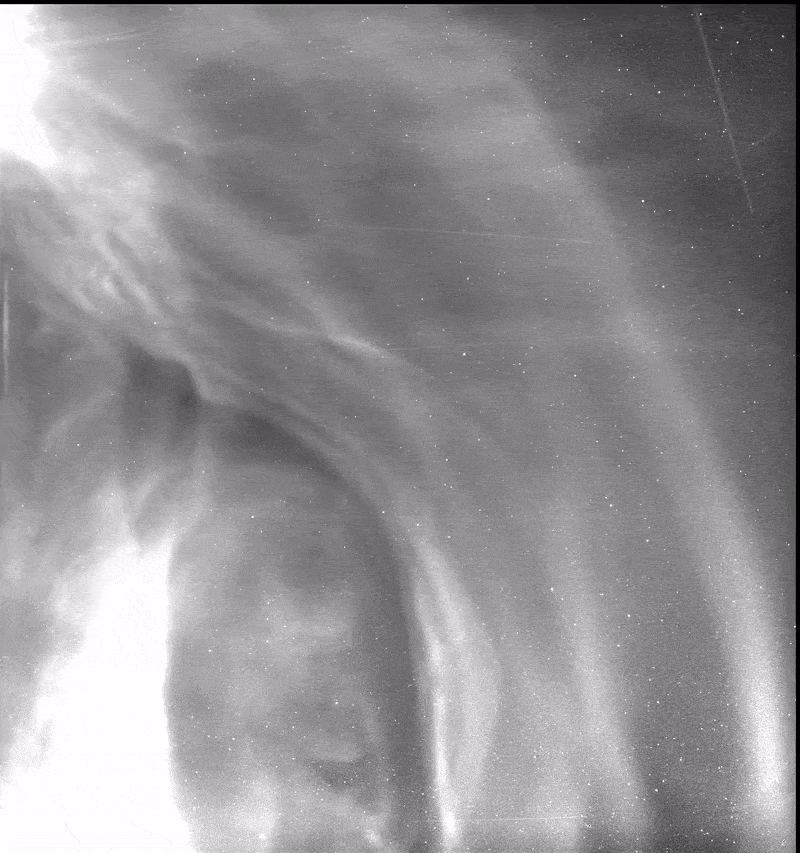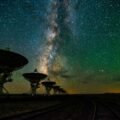In a landmark moment for space exploration and science, NASA’s Parker Solar Probe successfully plowed through a coronal mass ejection (CME) from the sun, capturing the celestial phenomena in unprecedented detail.
The journey provided more than just a stunning visual of solar fireworks; it also confirmed a two-decade-old hypothesis regarding how coronal mass ejections interact with cosmic dust, shedding new light on weather forecasting.
On September 5, 2022, the Parker Solar Probe flew just 5.7 million miles above the sun’s surface and became the first spacecraft to pass through a colossal solar eruption.
A breathtaking video captured by the probe showcases its journey through the turbulent wake of the CME’s leading edge before reemerging on the other side. The findings from the Parker Solar Probe’s journey were recently published in The Astrophysical Journal.
“This is the closest to the Sun we’ve ever observed a CME,” Nour Raouafi, the Parker Solar Probe project scientist at the Johns Hopkins Applied Physics Laboratory (APL) in Laurel, Maryland, said in a statement. “We’ve never seen an event of this magnitude at this distance.”
Coronal mass ejections are enormous eruptions spewed out by sunspots—areas on the sun’s surface marked by intense magnetic activity. These magnetic knots can snap abruptly, sending vast rings of charged plasma particles hurtling through space at millions of miles per hour.
Researchers have traditionally struggled to fully comprehend the sun’s internal dynamics. However, the Parker Solar Probe’s recent audacious mission has helped identify three unique stages in the evolution of a CME—shock wave, solar plasma, and a puzzling trailing wake of slow-moving particles.
Researchers have previously observed the first two sections of a CME event when past solar storms have reached Earth. However, this third stage involving a low-density region with slow-moving particles was “new and odd.”
“You try simplified models to explain certain aspects of the event, but when you are this close to the sun, none of these models can explain everything,” said lead study author Orlando Romeo, a space physicist at the University of California, Berkeley. “We’re still not exactly sure what is happening there or how to connect it to the other two sections.”
Understanding the sun’s temperamental behavior is more than merely academic. CMEs pose a genuine threat to Earth, especially regarding powerful geomagnetic storms.
The most intense solar storm to hit Earth in modern history occurred in September 1859. Known as the “Carrington Event,” the solar storm produced extraordinary auroras and knocked out electrical systems across the globe. A 2021 study published in the Annual Review of Astronomy and Physics estimated that the solar flare carried about as much energy as 10 billion 1-megaton nuclear bombs.
If a similar Carrington Event were to occur today, it would likely result in trillions of dollars in damages, including knocking satellites out of orbit and widespread electrical blackouts.
“Typical solar activity ‘sunspot’ cycles can produce at least two or three large storms, so it really is just a matter of chance whether one will cause a blackout or not,” NASA astronomer Dr. Sten Odenwald explained. “As it is for hurricanes and tornadoes, the more we can learn about the sun’s ‘space weather,’ the better we can prepare for the next storm when it arrives!”
Data from the Parker Solar Probe’s recent journey has also helped validate a 2003 theory that interactions between CMEs and interplanetary dust help drive dangerous space weather and the potential to disrupt communications and navigation technologies or knock out power grids on Earth.
Guillermo Stenborg, an astrophysicist at the Johns Hopkins Applied Physics Laboratory, explained that the Parker Solar Probe observed the CME acting “like a vacuum cleaner,” displacing dust in its path.
“These interactions between CMEs and dust were theorized two decades ago but had not been observed until Parker Solar Probe viewed a CME act like a vacuum cleaner, clearing the dust out of its path,” Guillermo Stenborg, an astrophysicist at the Johns Hopkins Applied Physics Laboratory, explained.
This discovery could have far-reaching implications for space weather prediction. For the first time, researchers could directly observe how interplanetary dust—comprising tiny particles from asteroids, comets, and even planets—affects the shape and speed of a CME.
As the sun approaches its solar maximum, the period in its 11-year cycle when solar activity peaks, scientists are eager to capture more of these rare solar phenomena. The Parker Solar Probe has already completed its sixth Venus flyby, using the planet’s gravity to propel itself even closer to the sun for future observations.
Scientists believe that insights from the Parker Solar Probe’s mission will reshape our understanding of space weather, ultimately helping to fortify Earth’s defense mechanisms against solar storms.
Tim McMillan is a retired law enforcement executive, investigative reporter and co-founder of The Debrief. His writing typically focuses on defense, national security, the Intelligence Community and topics related to psychology. You can follow Tim on Twitter: @LtTimMcMillan. Tim can be reached by email: tim@thedebrief.org or through encrypted email: LtTimMcMillan@protonmail.com

